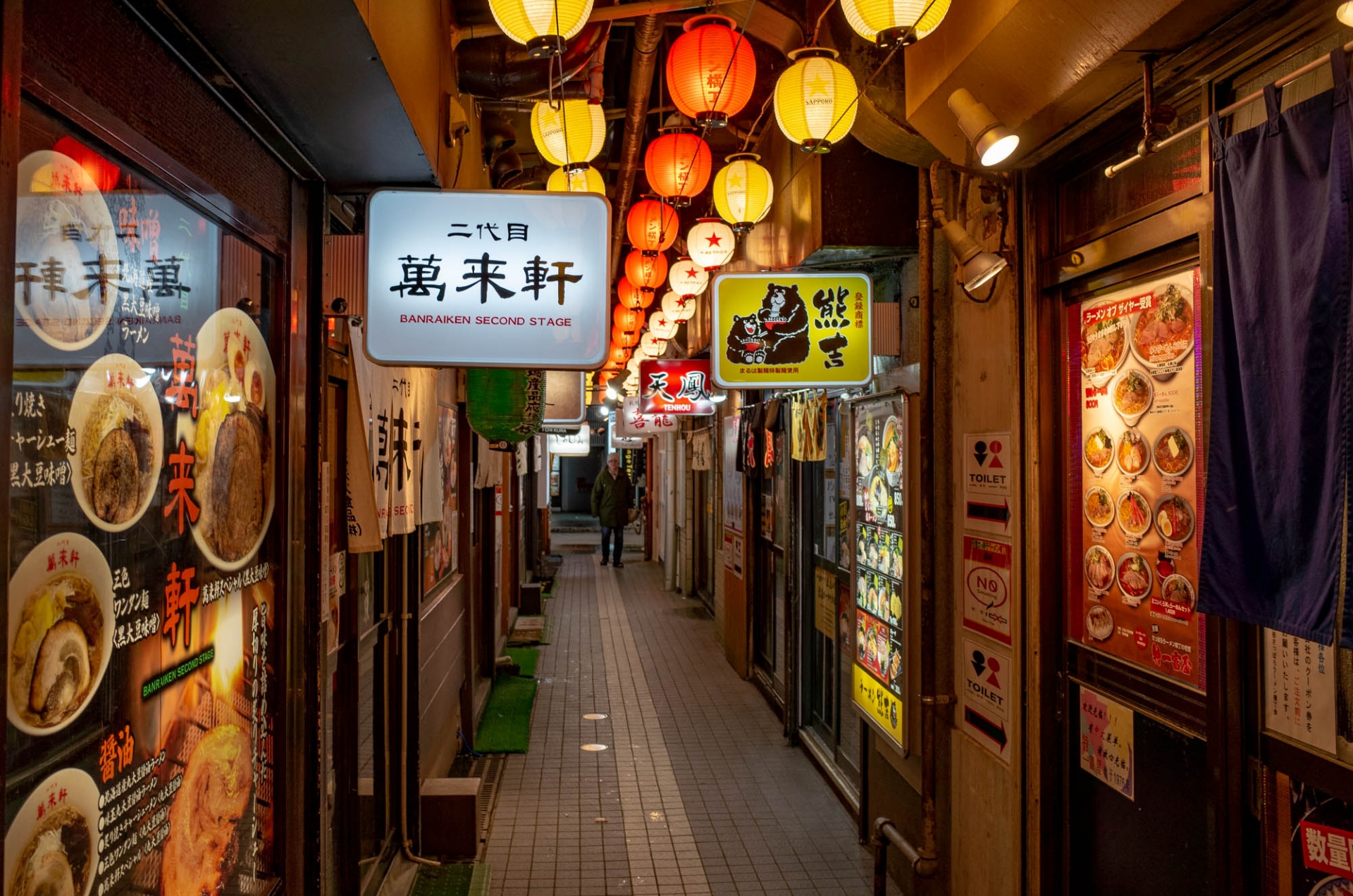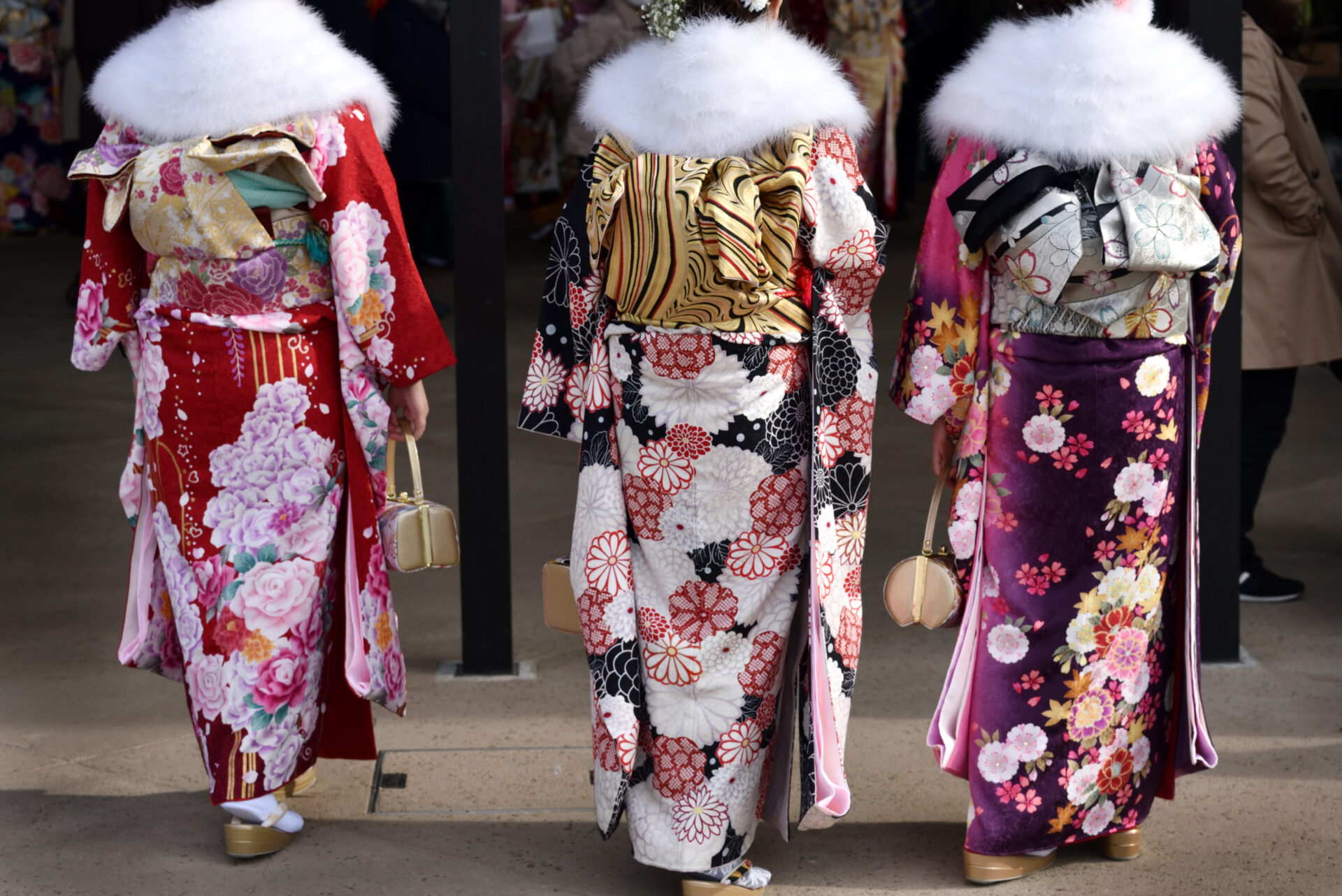One of the best parts of traveling is the chance to immerse yourself in a totally new and different environment. Think about it, what are some of your best travel memories? They often revolve around pretty streets, fairytale-like castles, and other beautiful buildings and neighborhoods. Architecture has a large influence on the atmosphere of an area, and its impression is famous across the world in some cases. Japan blends the traditional with the modern. The country produces an innovative spirit that has continued for centuries or more. Many people describe aspects about Japan and its culture as unique. Whether developing its own traditions like ikebana, karate or sushi; or improving upon others ideas such as automobiles, timepieces and even Disney, it’s obvious that Japan takes pride in its work and strives for perfection. One of the most prevalent fields to support this assertion is the field of architecture. Japanese architects have developed buildings all over the globe, and are renowned for their attention to detail and original ideas.
The Japanese architectural style is influenced by factors like earthquake resistance, the use of wood, the use of sliding doors, and the relationship with nature. Let’s have a look at some of the award-winning famous Japanese architects and their most iconic work!
1. Ando Tadao (安藤忠雄)
Inspired by the Imperial Hotel during a trip to Tokyo, a young Osaka-born Ando Tadao changed his career path from professional boxing to architecture. He values the simplicity of design – a mix of nothingness and empty space, with a hint of nature. His designs are influenced by Japanese religion and lifestyle and Ando’s work might give you a feeling of ‘Zen’ with large surfaces and a creative use of natural light. Especially his Church of Light in Osaka showcases this artistry with light in the cross formed by light from outside through slits between the walls. Other notable works are Omotesando Hills in Tokyo, the Chichu Art Museum and Benesse House in Naoshima, and the Hyogo Prefectural Museum of Art. He has not only designed buildings in Japan but also in other Asian countries, Europe, and the US.
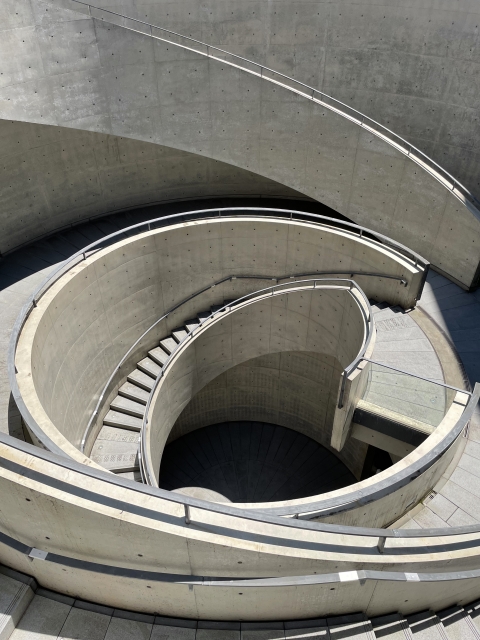
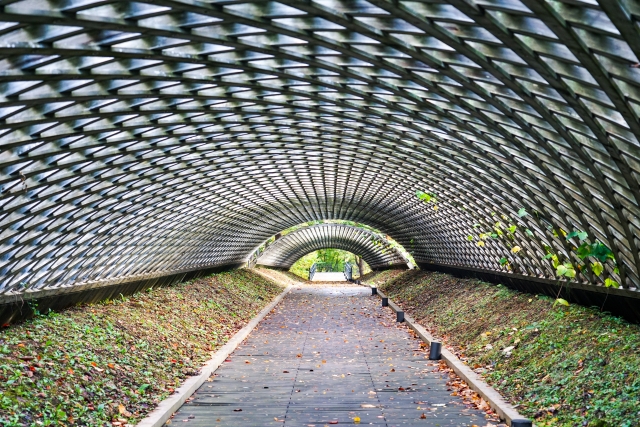
2. Tange Kenzo (丹下健三)
Recognized as one of the most influential architects of the 20th centuries in the world, Tange Kenzo is known for creating a beautiful combination of Japanese and modernist European influences. As he was born in 1913, he had the chance to get involved with rebuilding war-ravaged cities after WW2 which was when his background in urban planning that he studied at the prestigious Tokyo University proved especially useful. He later also taught urban engineering as a professor, and some of his students went on to become famous architects as well. He enjoyed blending traditional Japanese style with a more modern style creating a truly unique hybrid style. Having been a part of the avant-garde Metabolist movement, he has influenced important buildings of Tokyo’s big city architectural landscape.
Tange won the competition for the Hiroshima Peace Memorial Park, was involved in the 1950s reconstruction of the important Ise Shrine, and in the 1960s he designed the Yoyogi National Gymnasium for the 1964 Olympics which was used again in 2020. The most popular building among tourists that was designed by Tange is the Tokyo Metropolitan Government Office in Shinjuku, from which you can see an amazing view of the city from two free observation decks.
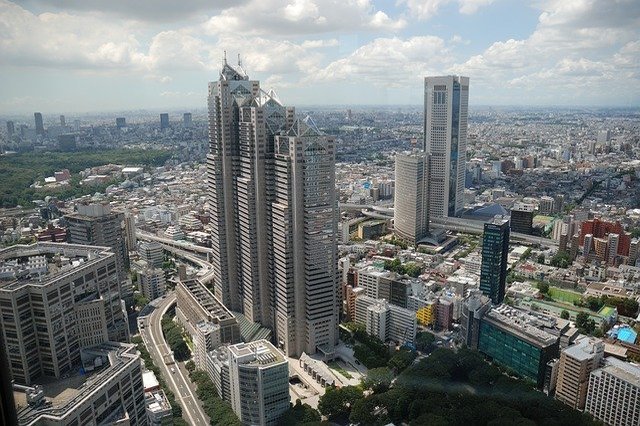
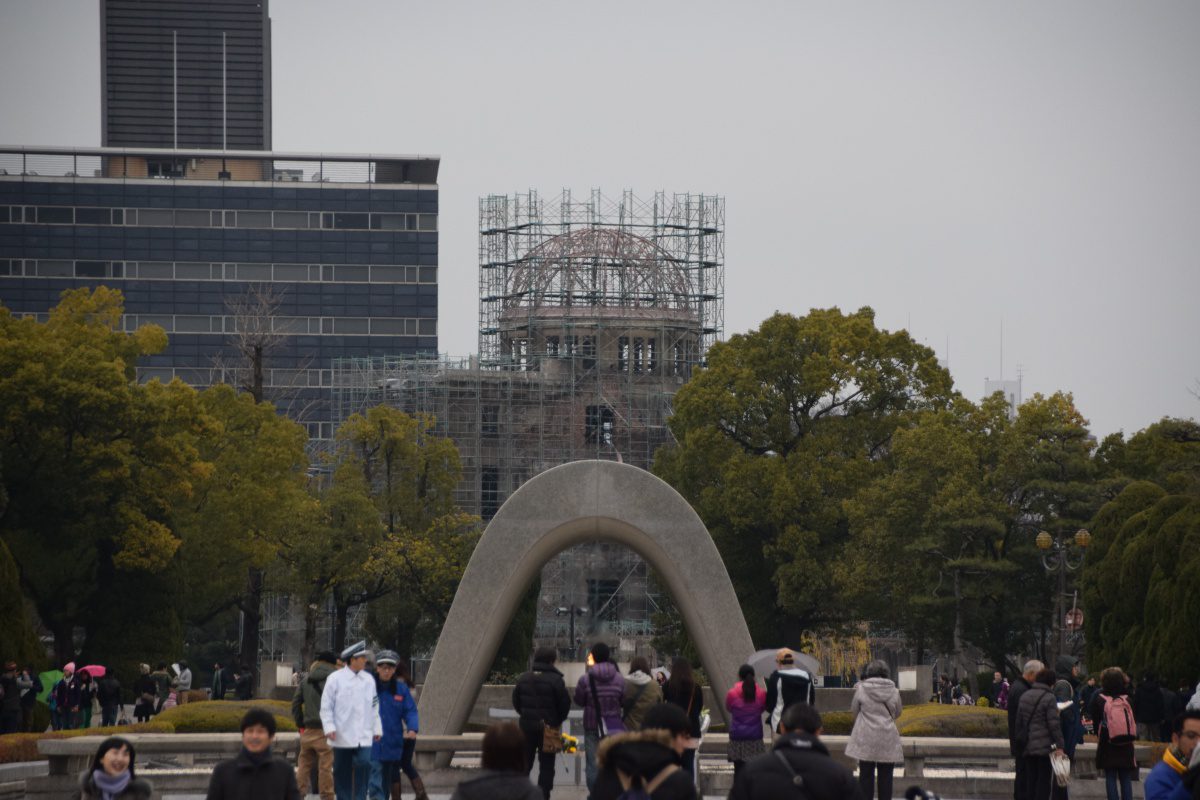
3. Maki Fumihiko (槇文彦)
Maki Fumihiko has a strong educational background with degrees from Tokyo University, Cranbrook Academy of Art, and the Harvard Graduate School of Design. His work is famous for harmonizing traditional Japanese elements with modernism, and Maki was the one who introduced the concept of ‘oku’ in architecture. Oku is best translated as ‘inner’, and it is a concept that revolves around the spaces that’s created by a structure’s borders. It is a bit hard to understand if you don’t see it, so if you want to learn more about oku you should see Maki’s works like Spiral or TV Asahi headquarters in Tokyo, the Shimane Museum of Ancient Izumo, or the Aga Khan Museum in Toronto. Many of his famous works are outside of Japan, and if you happen to go to the MIT campus in Massachusetts, the MIT Media Lab extension also originated on Maki’s drawing table.

4. Kikutake Kiyonori (菊竹清訓)
Known as one of the founders of the influential Metabolist group, Kikutake Kiyonori had a great influence on revolutionary city architecture between the 1960s and 1990s. The Metabolist movement is known for their interesting mix of traditional Japanese architecture with post-war modern Western architecture. They designed buildings with city dwellers’ lives in mind, and the need for easy adaptation of their changing living and working circumstances. In post-war Japan, the economy started to boom and the Metabolist movement grew with it. Some of their buildings resemble space ships, and the Kikutake-designed famous Nakagin Capsule tower that was built in just 30 days in Tokyo is one of the best examples of this slowly disappearing architectural style.
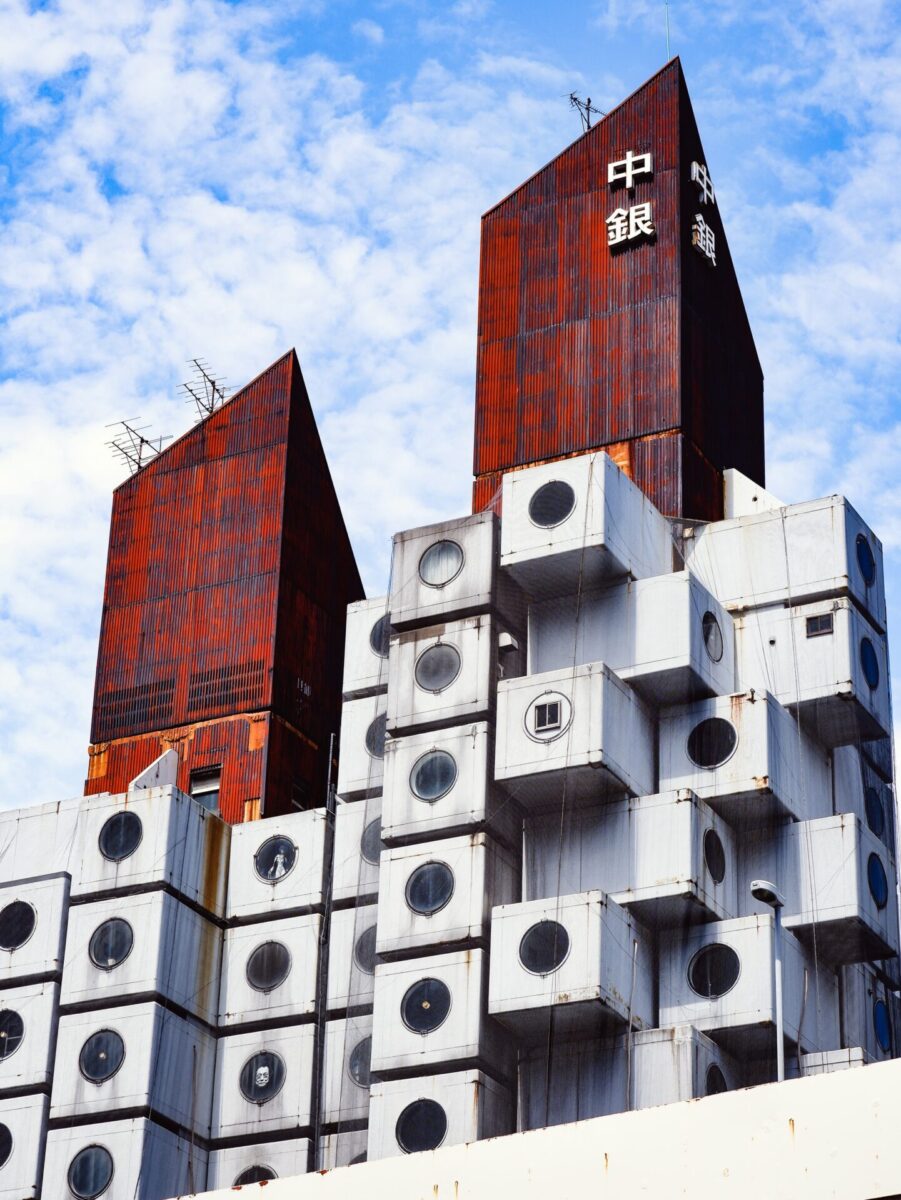
5. Kurokawa Kisho (黒川紀章)
Another famous architect who worked on the Nakagin Capsule tower was Kurokawa Kisho. Kurokawa was also one of the founders of the Metabolist group alongside Tange, Kikutake and Maki, and he was the philosophist of the group. He noted that impermanence and uncertainty is a part of life in Japan which he translated into buildings that are removable and adaptable. The Japanese idea about nature being beautiful as it is also comes back in Kurokawa’s work; materials are used as they are, without feeling the need to cover them up or use unnatural colors. Openness to change is another pillar of the Metabolist movement, with easily interchangeable units being an integral part of the movement. This recycling also made Metabolist buildings sustainable, so in a way, they were ahead of their time. The National Bunraku Theatre in Osaka, the Nagoya City Art Museum, the National Art Center in Roppongi (Tokyo), and the Saitama Prefectural Museum of Modern Art are among Kurokawa’s notable works. He also designed many buildings abroad, including a wing of the famous Van Gogh Museum in Amsterdam.
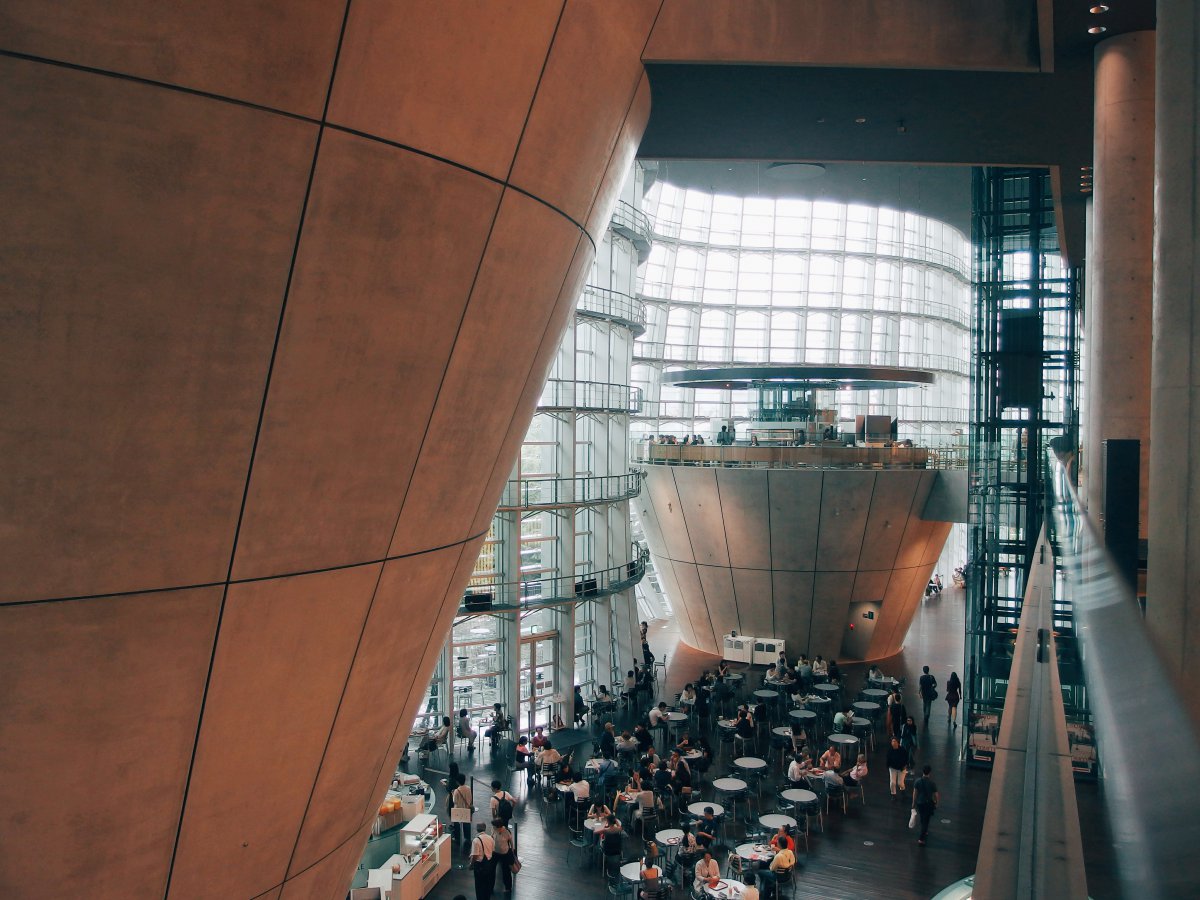
6. Ito Toyo (伊東豊雄)
Known for a style characterized by lightness, joy and individuality, Ito Toyo has produced some very innovative buildings. Ito thinks that not only utility but also visual pleasure are important in architecture. After having been a part of the Metabolist movement, Ito started his own company and he initially focused on designing smaller residential projects. The house he designed for his mourning sister was completely white inside with only a few windows that let the light through with interesting effects. Later, he worked on larger projects again of which the Tower of the Wind in Yokohama that featured a light show, the Mediatheque in Sendai that looks like an aquarium, and the playful Mikamoto Ginza 2 flagship store in Tokyo that features pearls in its design.

7. SANAA
SANAA is an architecture firm founded by two people: Sejima Kazuyo and Nishizawa Ryue. Sejima was born in Ibaraki, Japan. After earning her Master’s degree in architecture she started an apprenticeship with architect Ito Toyo. After her apprenticeship she founded her own firm and hired her former co-worker, Nishizawa, who went on to become her partner. She has taught at universities in Japan, Austria and the United States. Sejima tends to prefer glass and glass-like materials in her work. Nishizawa is originally from Kanagawa, Japan. He became the youngest recipient to ever receive the Pritzker Prize while working with Sejima.
SANAA was founded in 1995 and has projects spanning across Europe, Australia, Asia and the United States. Some of their most well-known projects include the Christian Dior store in Omotesando (Tokyo) and the 21st Century Museum of Contemporary Art (Kanazawa, Japan), The Rolex Learning Center (Switzerland) and The New Museum of Contemporary Art (New York City).
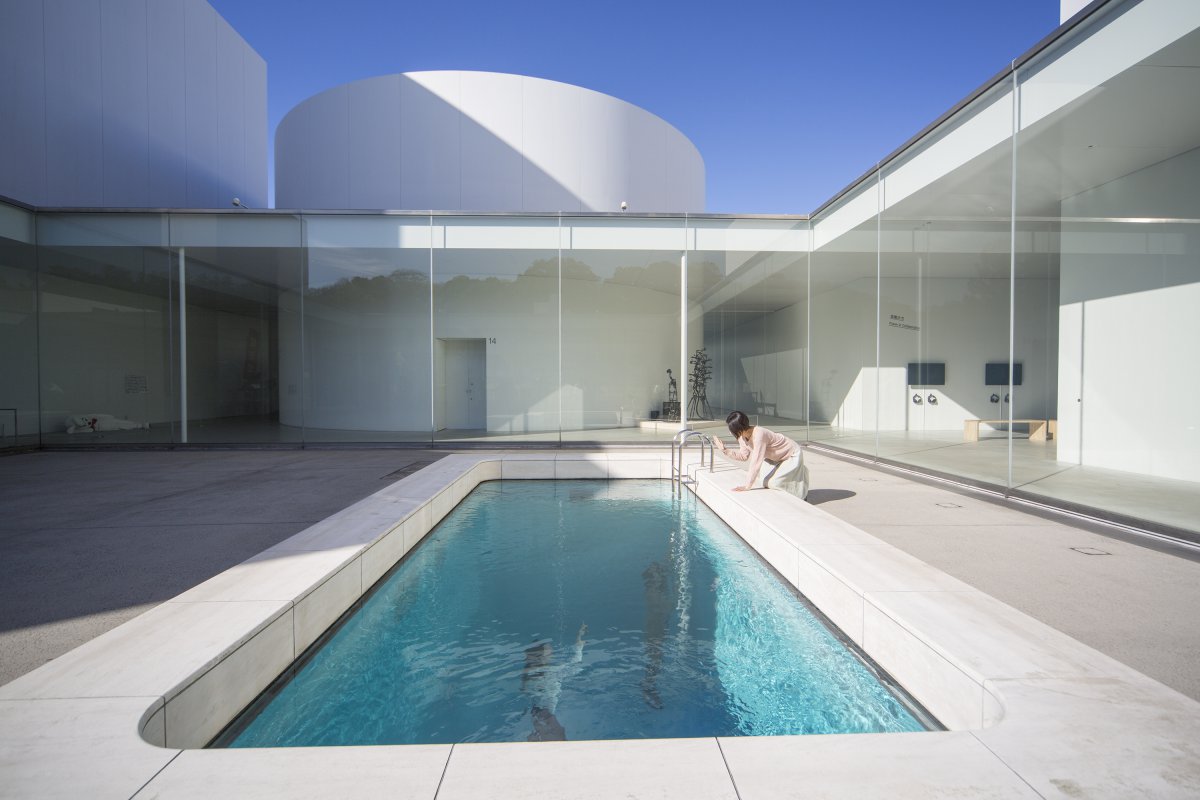
Photo credit : Kanazawa City
8. Hara Hiroshi (原広司)
Hara Hiroshi is an architect and author who was educated in both Japan and the United States. He received a BA, MA and PhD from Tokyo University before becoming an associate professor at the school. He has published theoretical essays about architecture, one of his most famous publications being “Discrete City.” Some of his more famous projects include the Kyoto Station Complex in Kyoto, Umeda Sky Building in Osaka and the Sapporo Dome in Sapporo.
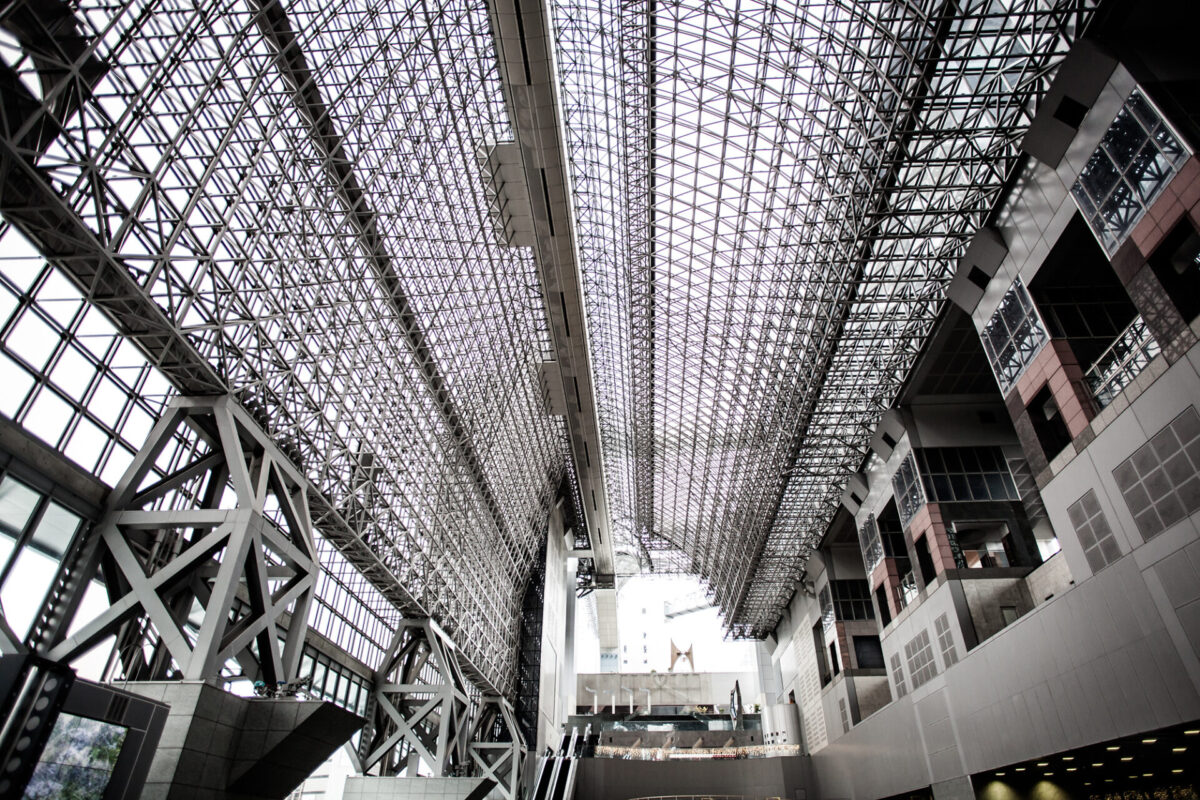
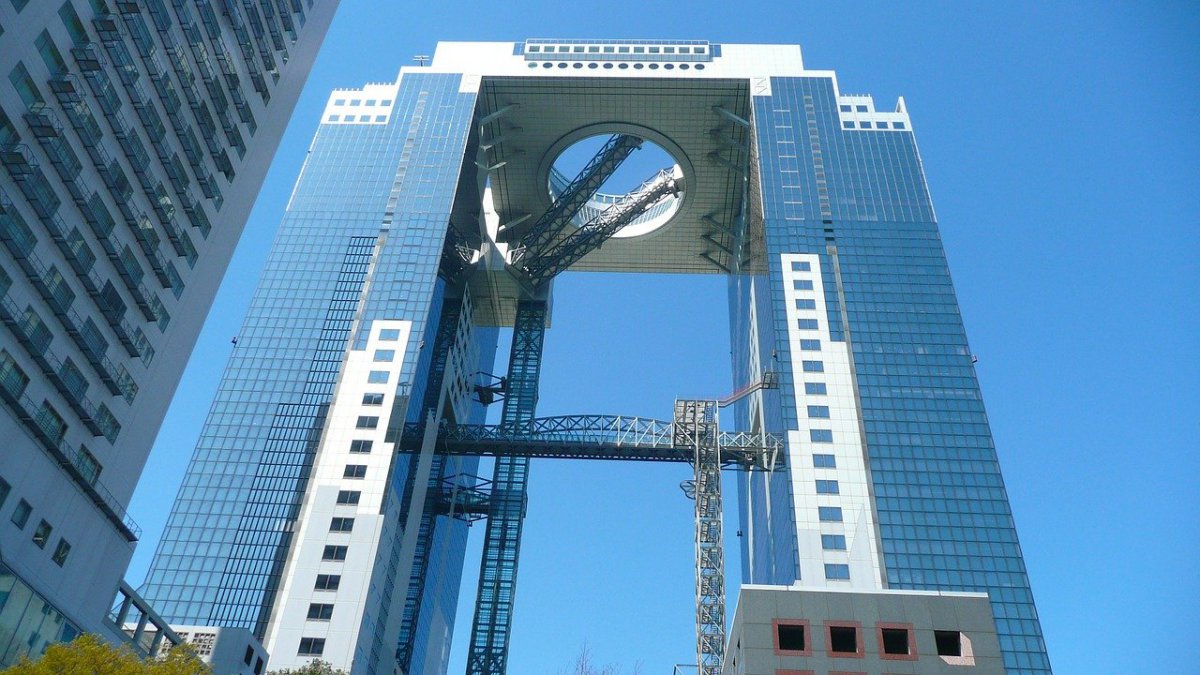
9. Kuma Kengo (隈研吾)
Last but not least, Kuma Kengo is probably the most famous Japanese architect, who was born in Yokohama. Early in life he moved to New York City where he attended Columbia University, eventually becoming a professor at universities both, in the United States and Japan. He founded Kuma Lab in 2009 with support from the University of Tokyo. Kuma Lab is a research laboratory that is focused on architecture and related areas such as sustainability and structural materials. Kuma himself leads this department. Kuma has stated that his main goal is to recover the tradition of Japanese buildings and to reinterpret them for the 21st century. A lot of focus is placed on the connection between the inside and the outside in his projects.
With his own offices in Tokyo and Paris, he is especially known for his ability to combine contemporary architecture with natural materials and traditional Japanese construction techniques. Light and transparency play a large role in his designs. Kuma’s designs possess a certain simplicity but always stand out and make passersby want to stop and have a look. He has designed some of Tokyo’s most stunning new additions such as the Tourist Information Center in Asakusa, the Nezu Museum, the Starbucks Reserve Roastery in Nakameguro, and La Kagu in Kagurazaka. In Saitama, Kuma has designed the futuristic Tokorozawa Sakura Town. Kuma recently had some great worldwide exposure during the Tokyo 2020 Olympics, as he was responsible for the design of the Japan National Stadium in Shinjuku (Tokyo) which was the setting for the Opening Ceremony among other events.
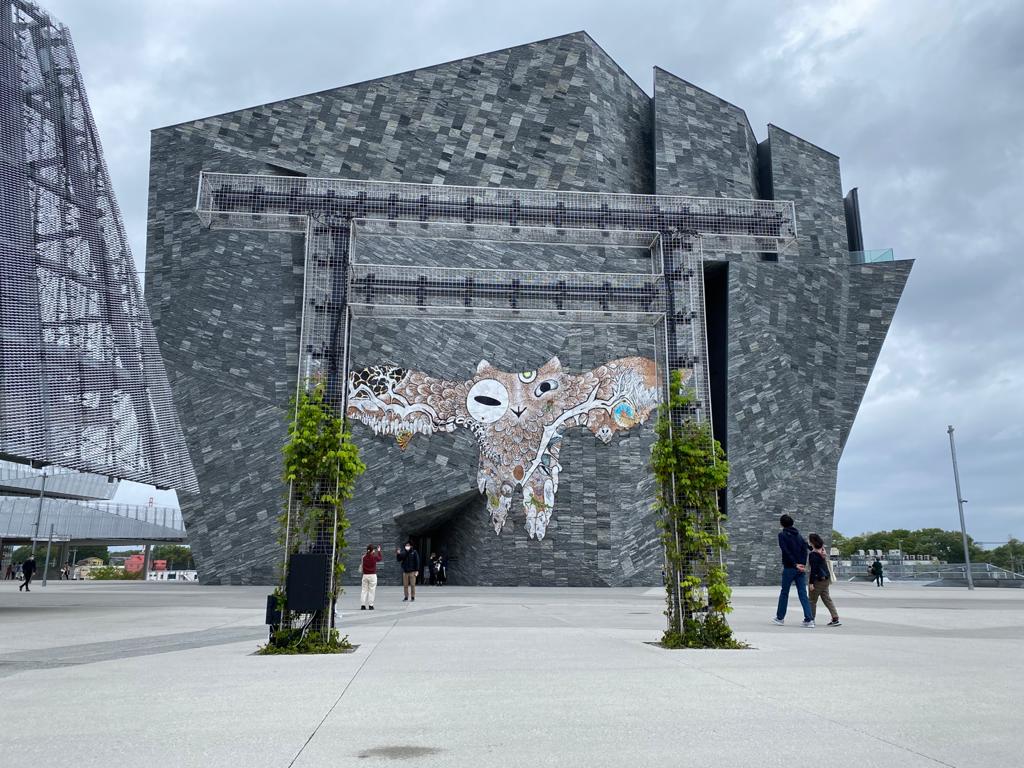

Traveling in Japan
If you’re going to travel in Japan, you may want to get more background information about what you see. There is so much to learn about culture, history, society, art, and architecture, and sometimes it can be easy to overlook details which can really bring a place to life. Hiring a private guide for one day in for example Tokyo, Kyoto, or Kanazawa can really help you enjoy the cities at a deeper level. You will get great insights into the Japanese way of life, and extra information about architecture you will see during the tour if you’d like that. Because we only arrange private tours, you will always get the option to customize your itinerary to fit your interests!
▶Tokyo 1-Day Highlights Private Walking Tour (8 hours)
These Japanese architects helped to shape the industry, not only in Japan, but across the world with their innovative designs combining the traditional styles that they know. Adding a modern flare to ensure their work will be enjoyed for a long time to come. Which one is your favourite?
Follow us on Instagram, Facebook and Twitter for more travel inspiration. Or tag us to get featured!
Happy travelling!
Other article you might enjoy
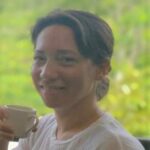
Stefanie Akkerman moved from the Netherlands to Japan in 2013 with her Japanese husband and son. She jumped into the niche of Dutch tour guiding in Tokyo and Kamakura in 2015 and occasionally writes articles about all the great sights and activities Japan has to offer. She loves (Japanese) food, and to work that all off she goes diving, snorkeling, cycling, or hiking.
This post may contain some affiliate links. When you click through and make a purchase we may receive some commission, at no extra costs to you.





